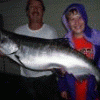-
Posts
2,832 -
Joined
-
Last visited

EdB replied to littleboat's topic in Michigan Waters Fishing Reports - Salmon and Trout

EdB replied to littleboat's topic in Michigan Waters Fishing Reports - Salmon and Trout

EdB replied to coralee's topic in Rivers and Streams Fishing Reports - Walleye

EdB replied to Jim F's topic in Michigan Waters Fishing Reports - Salmon and Trout

EdB replied to littleboat's topic in Michigan Waters Fishing Reports - Salmon and Trout

EdB replied to DIRTY DOG's topic in Michigan Waters Fishing Reports - Salmon and Trout

EdB replied to Jim F's topic in Michigan Waters Fishing Reports - Salmon and Trout

EdB replied to Dr Hook's topic in Michigan Waters Fishing Reports - Salmon and Trout

EdB replied to jvern's topic in Michigan Waters Fishing Reports - Salmon and Trout


EdB replied to coralee's topic in Michigan Waters Fishing Reports - Salmon and Trout

EdB replied to littleboat's topic in Michigan Waters Fishing Reports - Salmon and Trout

